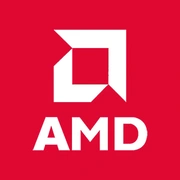AMD Radeon HD 7770 GHz Edition

AMD Radeon HD 7770 GHz Edition: A Retrospective and Relevance in 2025
Introduction
The AMD Radeon HD 7770 GHz Edition, released in 2012, became a symbol of affordable gaming in its time. By 2025, it is seen more as a relic but still finds application in specific scenarios. In this article, we will explore its features, performance, and place in the modern market.
Architecture and Key Features
Architecture: The HD 7770 GHz Edition is built on the first generation of Graphics Core Next (GCN 1.0). This is AMD's first architecture focused on general-purpose computing and improved energy efficiency.
- Process technology: 28 nm (TSMC).
- Compute units: 640 stream processors, 40 texture units, and 16 ROP units.
- Base/Turbo clock speed: 1000 MHz (no dynamic overclocking).
Unique Features:
- Support for DirectX 11.1 and OpenGL 4.2.
- AMD App Acceleration technologies to enhance performance in multimedia tasks.
- Lack of modern features: Ray tracing, FSR (FidelityFX Super Resolution), or DLSS equivalents are not supported.
Memory: Specifications and Impact on Performance
- Memory type: GDDR5.
- Capacity: 1 GB.
- Bus: 128-bit.
- Bandwidth: 72 GB/s.
Impact on Performance:
The limited capacity and bus width became the main bottlenecks for the card even in 2012. By 2025, 1 GB of memory is insufficient for most games and applications—high-resolution textures and complex scenes cause FPS drops due to a lack of VRAM.
Gaming Performance: Nostalgia in Pixels
The HD 7770 GHz Edition was designed for 1080p gaming at medium settings. Here are examples of FPS in games from its prime (tests conducted from 2012 to 2015):
- Skyrim (2011): ~45 FPS on high settings.
- GTA V (2015): ~30 FPS on medium settings.
- CS:GO: ~100 FPS on maximum settings.
Modern Projects (2020-2025):
Even at low settings in games like Cyberpunk 2077 or Starfield, the card shows less than 15 FPS. Support for resolutions above 1080p (1440p, 4K) is impossible due to a lack of resources.
Ray Tracing:
Hardware support is absent. Software solutions (e.g., via DirectX Raytracing) are unrealistic due to insufficient computational power.
Professional Tasks: Modest Capabilities
- Video Editing: Suitable only for basic editing at resolutions up to 1080p. Programs like DaVinci Resolve will operate with delays due to the small memory capacity.
- 3D Modeling: Blender or Maya will run, but rendering on OpenCL will take significantly longer than on modern GPUs.
- Scientific Computing: Lack of support for modern APIs (CUDA is unavailable) makes the card impractical for serious tasks.
Power Consumption and Heat Output
- TDP: 80 W—modest even for 2025.
- Cooling: Standard cooler with an aluminum heatsink and fan. Noise levels between 28-32 dB, which is acceptable for office builds.
- Case Recommendations: Due to its compact size (length ~210 mm), the card will fit into small form factor cases. At least one ventilation system is recommended for heat dissipation.
Comparison with Competitors
Analogues from 2012-2013:
- NVIDIA GeForce GTX 650 Ti: Comparable performance but with 2 GB of GDDR5. In games with high-resolution textures, the GTX 650 Ti outperformed the HD 7770 due to the larger memory capacity.
- AMD Radeon HD 7850: A more powerful option (1024 stream processors, 2 GB) but at a higher price.
In 2025:
The HD 7770 falls behind even budget newcomers like the Intel Arc A380 or AMD Radeon RX 6400, which offer 4-6 GB of memory and support for modern APIs.
Practical Usage Tips
- Power Supply: A 400 W supply with an 80+ Bronze certification is sufficient. The card does not require additional connectors—power is supplied via PCIe x16.
- Compatibility: Operates on PCIe 2.0 x16 and is compatible with PCIe 3.0/4.0, but with limited bandwidth.
- Drivers: The last official drivers are Adrenalin 2015. Modified community drivers can be used for Windows 10/11, but stability is not guaranteed.
Pros and Cons
Pros:
- Energy efficiency (ideal for HTPC or office PCs).
- Quiet operation.
- Low price on the second-hand market (in 2025—$20-30).
Cons:
- Outdated architecture.
- 1 GB of memory is critical for modern tasks.
- Lack of support for new technologies (DirectX 12 Ultimate, FSR).
Final Conclusion: Who is the HD 7770 Suitable for in 2025?
This graphics card is a choice for:
1. Retro gaming enthusiasts, wanting to run old projects from the 2000s to early 2010s.
2. Office PC owners needing to output to multiple monitors.
3. Budget media center builders for watching videos at 1080p.
The HD 7770 GHz Edition is a prime example of "digital archaeology." It is not suited for modern games or professional tasks but remains a monument to an era when 1 GB of memory and 28 nm were seen as breakthroughs. In 2025, it should be viewed only as a temporary solution or a nostalgic build component.
Basic
Memory Specifications
Theoretical Performance
Miscellaneous
Benchmarks
Compared to Other GPU
Share in social media
Or Link To Us
<a href="https://cputronic.com/gpu/amd-radeon-hd-7770-ghz-edition" target="_blank">AMD Radeon HD 7770 GHz Edition</a>